Related Research Articles
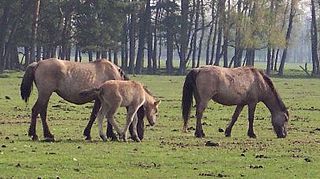
The Dülmener or Dülmen is a German breed of small feral horse. It was formerly known as the Merfelderbrücher. A herd of approximately 300 head lives in feral conditions in an area of about 3.5 km2 in the Merfelder Bruch, near the town of Dülmen in the Kreis of Coesfeld in north-western Nordrhein-Westfalen, in north-western Germany.
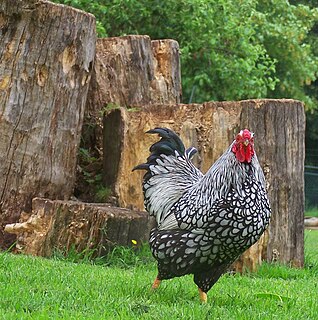
The Wyandotte is an American breed of chicken developed in the 1870s. It was named for the indigenous Wyandot people of North America. The Wyandotte is a dual-purpose breed, kept for its brown eggs and its yellow-skinned meat. It is a popular show bird, and has many color variants. It was originally known as the American Sebright.

The Rare Breeds Survival Trust is a conservation charity whose purpose is to secure the continued existence and viability of the native farm animal genetic resources (FAnGR) of the United Kingdom. It was founded in 1973 by Joe Henson to preserve native breeds; since then, no UK-native breed has become extinct.

The Emden or Embden is a German breed of domestic goose. It is named for the town of Emden in north-westernmost Germany.

The Rhenish German Coldblood, German: 'Rheinisch Deutsches Kaltblut', is a breed of heavy draught horse from the Rhineland area of western Germany. It was bred in second part of the nineteenth century, principally at the Prussian state stud at Schloss Wickrath in Wickrathberg, now part of Mönchengladbach in North Rhine-Westphalia.

The Black Forest Horse is an endangered German breed of light draft horse from the Black Forest of southern Germany.

The Lakenvelder or Lakenfelder is a breed of domestic chicken from the Nordrhein-Westfalen area of Germany and neighbouring areas of the Netherlands. It was first recorded in 1727.
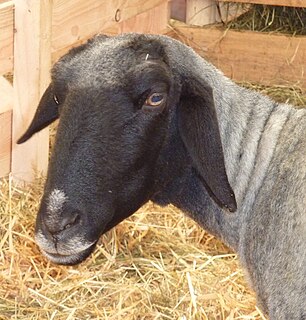
The Alpines Steinschaf is a breed of domestic sheep indigenous to the Eastern Alps of Austria and southern Germany. It is used for wool, meat and vegetation management.
The Arenberg-Nordkirchen, German: 'Arenberg-Nordkirchner', is a breed of small riding horse from north-west Germany. It was believed extinct in 1985, but in 1995 a small number were discovered, and since 1999 the population has remained stable at about 20–25 head. The Arenberg-Nordkirchen is in the highest-risk category of the Rote Liste of the Gesellschaft zur Erhaltung alter und gefährdeter Haustierrassen, the German national association for the conservation of historic and endangered domestic animal breeds.
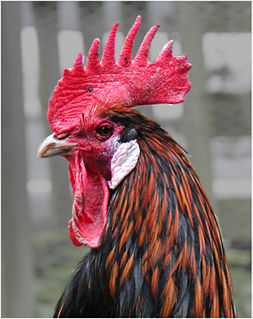
The Bergische Kräher is a German breed of domestic chicken from the Bergisches Land, in the state of North Rhine-Westphalia in western Germany. It is named for its unusually long crow, up to five times as long as that of other breeds, and belongs to the group of long-crowing chicken breeds, which are found from south-east Europe to the Far East.
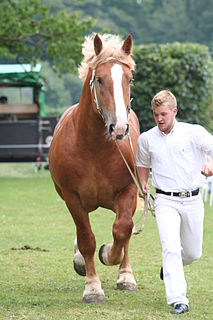
The Schleswig Coldblood is a breed of medium-sized draught horse originally from the historic Schleswig region of the Jutland Peninsula, which today is divided between modern Denmark and Germany, and from which its name derives. It is found primarily in the northern German state of Schleswig-Holstein, and also, in smaller numbers, in Lower Saxony. It shares the origins, ancestry and much of the history of the Danish Jutland breed, and shows some similarity to the British Suffolk Punch. It is used in agriculture and forestry, and to draw coaches and wagons.

The Gesellschaft zur Erhaltung alter und gefährdeter Haustierrassen or GEH is a German national association for the conservation of historic and endangered domestic animal breeds.

The Rotes Höhenvieh is a breed of red cattle from the Central Uplands of Germany. It was created in 1985 as a merger of the few remaining examples of a number of closely similar regional breeds of upland red cattle. Reconstruction of the breed was made possible by the discovery of a stock of semen in a sperm bank. The name means "red upland cattle".
The Rote Liste, full name Rote Liste der bedrohten Nutztierrassen im Bundesgebiet, is a red list of threatened breeds of domestic animal published annually by the Gesellschaft zur Erhaltung alter und gefährdeter Haustierrassen, the German national association for the conservation of historic and endangered domestic animal breeds.

The Bielefelder Kennhuhn or Bielefelder is a German breed of domestic chicken. It was developed in the area of Bielefeld in the 1970s by Gerd Roth, who cross-bred birds of Malines and Welsumer stock with American Barred Rocks to create the breed. Like other breeds with Barred Rock parentage, it is auto-sexing – chicks of different sexes can be distinguished by their colour. There is a bantam version, the Bielefelder Zwerg-Kennhuhn.

The Bergische Schlotterkamm is an old and endangered German breed of domestic chicken. It originates from the Bergisches Land, in the state of North Rhine-Westphalia in western Germany, and is one of three chicken breeds from that area, the others being the Bergische Kräher and the German creeper ("Krüper").
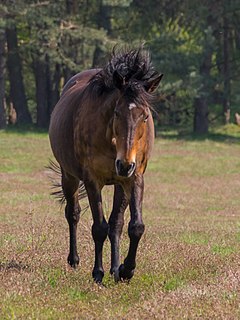
The Senner or Senne is a critically-endangered German breed of riding horse. It is believed to be the oldest saddle-horse breed in Germany, and is documented at least as far back as 1160. It is named for the Senne, a natural region of dunes and moorland in Nordrhein-Westfalen, in western Germany, and lived in feral herds there and in the Teutoburger Forest to the east.

The German Pekin is a European breed of domestic duck. It is commonly called simply Pekin or White Pekin. It is a different breed from the American Pekin, which is also commonly known by the same names. It was bred in Europe from birds originating in China and Japan and is distributed in many European countries.

The German Whiteheaded Mutton is a breed of sheep developed to live along the North Sea coast of Germany. It is a dual-use breed used for both its fine wool and meat production. They often graze along the North Sea dikes in Northern Europe.
References
- ↑ "THE GLOBAL PLAN OF ACTION FOR ANIMAL GENETIC RESOURCES" (PDF). fao.org. The Food and Agriculture Organisation of the United Nations. Retrieved 5 November 2014.
- ↑ "Farm Animal Conservation Trust". ais.up.ac.za. FACT. Retrieved 5 November 2014.
- 1 2 Kristiansen, editors: Paul; Taji, Acram; Reganold, John (2006). Organic agriculture : a global perspective. Wallingford: CABI/CSIRO Pub. p. 159. ISBN 9780643090903 . Retrieved 5 November 2014.CS1 maint: extra text: authors list (link)
- ↑ "English". szh.nl. Dutch Rare Breed Survival Trust. Retrieved 5 November 2014.
- ↑ "SLE heet u welkom!". sle.be. SLE. Retrieved 5 November 2014.